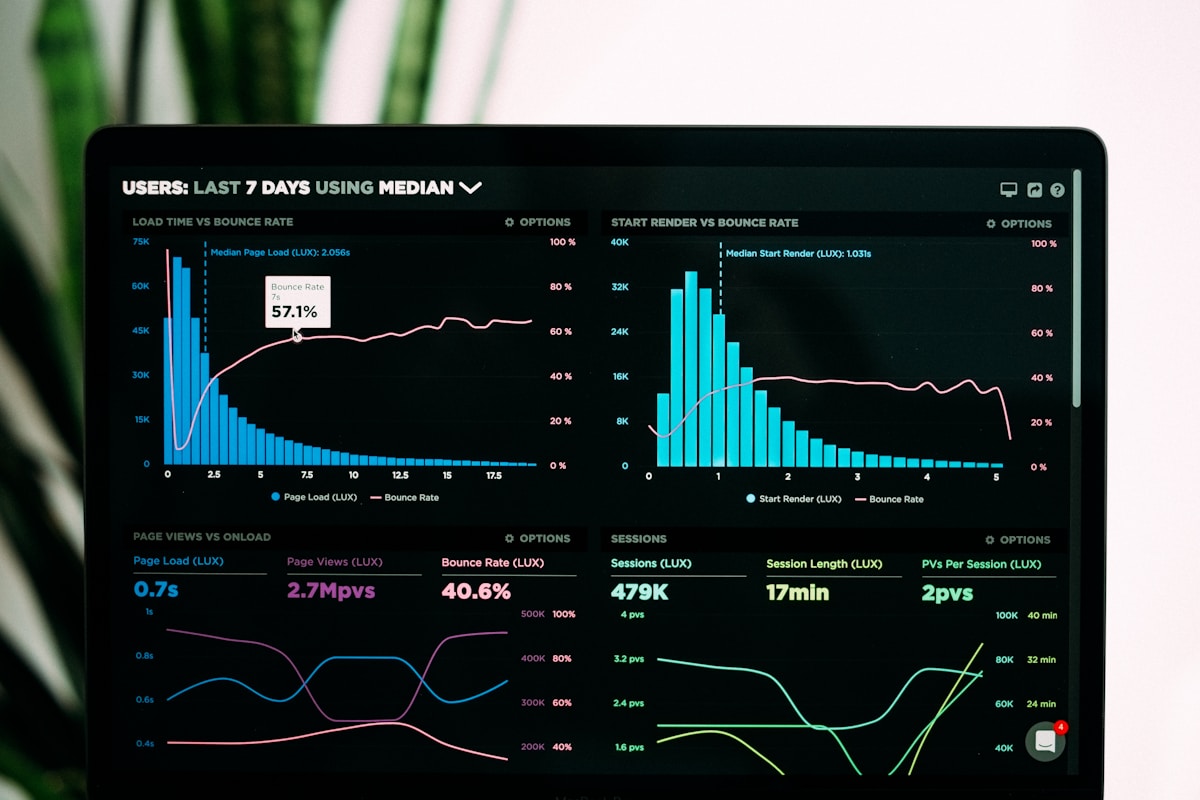AI-Driven Analytics: Beyond Traditional BI
The business intelligence landscape is undergoing a profound transformation. Traditional BI tools that once revolutionized data analysis with dashboards and visualizations are now giving way to more sophisticated AI-powered analytics platforms. These next-generation solutions promise not just to report what happened, but to predict what will happen, recommend actions, and even automate decisions. This article explores how AI is fundamentally reshaping analytics capabilities and what organizations need to know to stay ahead of this rapidly evolving curve.
The Evolution: From Descriptive to Prescriptive Analytics
The analytics maturity journey has accelerated dramatically with AI integration:
| Analytics Stage | Traditional Approach | AI-Enhanced Approach | Business Impact |
|---|---|---|---|
| Descriptive (What happened?) |
Static dashboards, manual data preparation | Automated data discovery, natural language summaries | 60% reduction in reporting time, broader data democratization |
| Diagnostic (Why did it happen?) |
Manual drill-downs, limited correlation analysis | Automated root cause analysis, anomaly detection | 83% faster identification of business issues |
| Predictive (What will happen?) |
Basic statistical forecasting, limited variables | Multi-factor ML predictions, confidence intervals | 35% average improvement in forecast accuracy |
| Prescriptive (What should we do?) |
Rarely achieved in traditional BI | Action recommendations, decision optimization | 41% improvement in decision outcomes |
| Autonomous (Automated execution) |
Not possible in traditional systems | Closed-loop systems that implement optimal actions | 24% operational cost reduction through automation |
According to Gartner's latest analytics market research, 67% of enterprises are now investing in AI-augmented analytics capabilities, up from just 35% in 2021. Organizations that successfully implement AI-driven analytics are reporting 2.3x higher ROI on their data investments compared to those using traditional BI alone.
Core AI Technologies Transforming Analytics
Several key AI technologies are driving this analytics revolution:
1. Machine Learning for Predictive Insights
Machine learning algorithms have evolved significantly in their analytical capabilities:
- AutoML Platforms: Automated machine learning tools that build, optimize, and deploy predictive models without requiring data science expertise, democratizing predictive analytics across organizations.
- Time Series Forecasting: Advanced algorithms incorporating multiple variables, external factors, and complex patterns to deliver highly accurate business forecasts for demand, revenue, and resource requirements.
- Anomaly Detection: Systems that identify patterns and outliers across massive datasets, automatically surfacing business-critical deviations that would go unnoticed in traditional analyses.
- Pattern Recognition: Algorithms that discover non-obvious relationships in data, revealing hidden opportunities and risks that traditional correlation analysis would miss.
Real-World Application: Retailer Walmart implemented ML-powered demand forecasting across 4,700 stores, reducing out-of-stock incidents by 30% while simultaneously decreasing inventory carrying costs by $2.9 billion annually.
2. Natural Language Processing for Data Democratization
NLP is breaking down barriers between humans and data:
- Conversational Analytics: Interfaces that allow business users to query data using natural language questions like "Show me sales by region for the past three quarters" rather than requiring technical SQL knowledge.
- Automated Insights: Systems that automatically generate narrative explanations of data trends, anomalies, and relationships in human-readable language, making analysis accessible to non-technical stakeholders.
- Semantic Layer Enhancement: NLP-powered systems that translate business terminology to technical data structures, allowing users to interact with data using familiar business concepts.
- Document Intelligence: Capabilities that extract, structure, and analyze information from unstructured documents, incorporating this valuable data into analytics workflows.
Implementation Example: Financial services firm JPMorgan Chase deployed conversational analytics across their retail banking division, enabling 12,000+ branch managers to access performance insights through natural language queries, increasing analytical activity by 347% and identifying $50M+ in revenue opportunities.
3. Computer Vision for Visual Data Analysis
Computer vision is adding an entirely new dimension to analytics:
- Image and Video Analytics: Systems that extract quantifiable insights from visual data, including retail shelf analysis, manufacturing quality inspection, and customer behavior in physical spaces.
- Visual Pattern Recognition: Algorithms that identify trends, anomalies, and relationships in visual representations of data that might be missed in numerical analysis.
- Augmented Data Preparation: Tools that automatically convert visual information from PDFs, screenshots, and legacy reports into structured data ready for analysis.
- Real-world Monitoring: Integration of computer vision with analytics to track and analyze physical operations, assets, and environments in real-time.
Industry Application: Agricultural giant Cargill implemented computer vision analytics across processing facilities, automatically analyzing product quality, employee safety compliance, and operational efficiency, generating a 22% productivity improvement and $35M annual savings.
4. Deep Learning for Complex Pattern Discovery
Deep learning is tackling previously impossible analytical challenges:
- Multi-dimensional Analysis: Neural networks capable of identifying complex patterns across hundreds of variables simultaneously, far beyond what traditional statistical methods can process.
- Sequential Pattern Mining: Models that discover patterns in sequences of events or behaviors, enabling anticipatory analytics for customer journeys, process flows, and dynamic systems.
- Multimodal Analytics: Frameworks that synthesize insights across text, numerical, visual, and temporal data, creating holistic understanding of complex business scenarios.
- Reinforcement Learning: Systems that continuously improve analytical models through feedback loops, optimizing for specific business outcomes rather than statistical accuracy.
Breakthrough Example: Insurance provider Progressive implemented deep learning analytics across their customer data, identifying 376 previously undiscovered microsegments with unique risk profiles and behaviors, enabling precision pricing that improved loss ratios by 16% while growing market share in targeted segments.
Key Implementation Approaches
Organizations are adopting several implementation models for AI-driven analytics:
1. Augmented Analytics Platforms
Major analytics vendors and innovative startups are embedding AI capabilities directly into analytics platforms:
- AI-Enhanced Visualization: Traditional dashboards augmented with automated insights, anomaly detection, and natural language generation.
- Guided Analysis Experiences: Interactive systems that guide users through analytical workflows, suggesting relevant visualizations and analyses based on data characteristics and business context.
- Automated Data Preparation: AI-powered ETL and data wrangling that automatically cleans, transforms, and enriches data before analysis.
- Embedded Predictive Capabilities: One-click forecasting, clustering, and classification integrated directly into business intelligence interfaces.
Platform Example: ThoughtSpot's SearchIQ combines natural language processing with AI-driven analytics to enable non-technical users to ask questions of their data in plain language and receive automatically generated visualizations and insights, reducing time-to-insight by 91% compared to traditional BI workflows.
2. Purpose-Built AI Analytics Solutions
Specialized AI analytics solutions focused on specific business domains:
- Customer Analytics: AI platforms specifically designed to analyze customer behavior, sentiment, journey patterns, and lifetime value.
- Supply Chain Intelligence: Solutions that combine internal operations data with external factors like weather, transportation conditions, and global events to optimize supply networks.
- Financial Analytics: Systems that detect patterns in financial transactions, identify optimization opportunities, and forecast cash flows with unprecedented accuracy.
- Marketing Attribution: AI-driven analysis that accurately attributes business outcomes to marketing activities across complex, multi-touch customer journeys.
Domain Solution: Retail analytics platform Lexer integrates customer data across touchpoints with AI-powered segmentation and predictive modeling, helping retailers like Zimmermann achieve a 33% increase in customer lifetime value through highly targeted retention strategies.
3. The Rise of Analytics Lakehouse Architectures
Modern data architecture is evolving to support AI-driven analytics:
- Unified Analytics Platforms: Architectures that combine data lake flexibility with data warehouse performance, enabling seamless AI/ML workloads on business data.
- Real-time Analytics Pipelines: Stream processing frameworks that enable AI analysis of data in motion, delivering insights at the speed of business.
- Semantic Layer Innovations: Business-oriented metadata layers that make complex data structures accessible to AI-powered analytical tools.
- Federated Governance: Systems that maintain data quality, security, and compliance while enabling the agility needed for AI exploration.
Architecture Impact: Financial technology company Block (formerly Square) implemented a lakehouse architecture supporting AI analytics across 40+ petabytes of data, reducing analytics query time from hours to seconds while supporting sophisticated machine learning models that improved fraud detection by 24% and personalization effectiveness by 31%.
Transformative Use Cases Across Industries
AI-driven analytics is creating breakthrough capabilities in multiple sectors:
1. Retail and E-commerce
- Hyper-personalized Customer Experiences: AI analytics that continuously adapt offerings, recommendations, and messaging based on real-time customer behavior and context.
- Dynamic Pricing Optimization: Systems that adjust pricing strategies based on demand patterns, competitive positioning, inventory levels, and customer value.
- Inventory Intelligence: Predictive models that optimize stock levels across complex distribution networks, balancing availability against carrying costs.
- Store Performance Optimization: Analytics combining foot traffic, sales data, staffing levels, and external factors to maximize store profitability.
ROI Example: Online retailer ASOS implemented AI-driven analytics across their merchandising operations, resulting in 13% improvement in full-price sell-through, 10% reduction in markdown inventory, and £30M annual profit improvement.
2. Financial Services
- Risk Analytics Advancement: Models incorporating thousands of factors to assess credit, market, and operational risks with unprecedented accuracy.
- Fraud Detection Evolution: Systems that identify suspicious patterns across billions of transactions in real-time, adapting to new fraud techniques as they emerge.
- Algorithmic Trading Enhancement: Analytics combining market data, news sentiment, and economic indicators to identify trading opportunities milliseconds before competitors.
- Customer Financial Health: Predictive analytics that identify clients at risk of financial difficulty, enabling proactive intervention and support.
3. Healthcare and Life Sciences
- Clinical Decision Support: AI analytics that process patient history, symptoms, test results, and medical literature to support diagnosis and treatment decisions.
- Population Health Management: Predictive models identifying at-risk patients for proactive intervention before conditions worsen.
- Operational Optimization: Analytics solutions that optimize resource allocation, reduce wait times, and improve care coordination across health systems.
- Drug Discovery Acceleration: AI systems analyzing biological data, clinical trials, and scientific literature to identify promising compounds and therapeutic approaches.
Outcomes Data: Healthcare provider Kaiser Permanente deployed AI analytics for population health management, identifying high-risk patients for proactive intervention, resulting in 28% reduction in emergency department visits and $32M annual savings in just one regional division.
Implementation Challenges and Solutions
Organizations face several challenges when advancing to AI-driven analytics:
1. Data Quality and Integration
AI analytics require robust, integrated data foundations:
- Challenge: Fragmented data sources, inconsistent formats, and quality issues that undermine AI model effectiveness.
- Solutions:
- Implementing data observability platforms that continuously monitor quality and lineage
- Deploying AI-powered data preparation tools that automate cleaning and standardization
- Establishing data mesh architectures that decentralize ownership while maintaining standards
- Creating unified customer/product/operational data models that integrate disparate sources
Implementation Approach: Manufacturing company Siemens established a "data fabric" architecture with AI-powered data quality monitoring across 50+ systems, reducing data preparation time by 71% and enabling advanced analytics that were previously impossible due to data silos.
2. Talent and Organizational Readiness
AI analytics requires new skills and organizational structures:
- Challenge: Shortage of data scientists and analytics professionals, combined with organizational resistance to AI-driven decision-making.
- Solutions:
- Establishing analytics Centers of Excellence that blend business and technical expertise
- Implementing upskilling programs focused on data literacy and AI concepts
- Adopting low-code/no-code AI analytics tools that empower business analysts
- Creating clear governance models that balance autonomy with oversight
Organization Model: Consumer goods company Unilever created a hybrid analytics operating model with centralized AI expertise supporting embedded analytics teams in business units, combined with extensive training programs that certified 4,000+ employees in data science fundamentals.
3. Responsible AI and Governance
As analytics becomes more powerful, governance becomes more critical:
- Challenge: Ensuring AI analytics systems produce fair, explainable, and compliant insights while maintaining agility.
- Solutions:
- Implementing explainable AI techniques that provide transparency into analytical reasoning
- Establishing bias detection and mitigation protocols for all models
- Creating clear documentation of data lineage, model assumptions, and limitations
- Developing ethical guidelines specific to analytical applications
Governance Framework: Financial institution Morgan Stanley developed a comprehensive AI analytics governance framework including automated bias testing, explainability requirements, and regular audits, enabling them to safely scale to 300+ AI analytics models while maintaining regulatory compliance.
Future Trends: The Next Horizon
Several emerging technologies will further transform AI-driven analytics:
1. Generative AI in Analytics
Large language models and generative AI are creating entirely new analytical paradigms:
- Analytics Copilots: AI assistants that collaborate with analysts, suggesting analyses, generating visualizations, and explaining insights in natural language.
- Synthetic Data Generation: Creation of statistically representative synthetic datasets for analytics development and testing, addressing privacy concerns and data limitations.
- Automatic Report Generation: Systems that create comprehensive, narrative-driven analysis documents customized for different stakeholder needs.
- Multimodal Analytics Interfaces: Platforms combining voice, text, and visual interaction for intuitive analytical experiences.
Emerging Application: Microsoft's Power BI integration with Copilot enables business users to describe the analysis they need in natural language, with the system automatically generating the appropriate visualizations, calculations, and insights—reducing complex analytical tasks from hours to minutes.
2. Decision Intelligence Frameworks
The evolution from analytics to automated decision-making:
- Cognitive Decision Support: Systems that model complex decision processes, evaluating options against multiple criteria and constraints.
- Decision Automation Platforms: Frameworks that implement optimal decisions automatically for routine operational scenarios.
- Simulation-based Analytics: Digital twins and Monte Carlo simulations that model potential outcomes of different decisions before implementation.
- Continuous Decision Optimization: Systems that learn from decision outcomes to improve future recommendations.
Pilot Results: Logistics company Maersk implemented a decision intelligence platform for container shipping operations, automatically optimizing vessel routes, port selections, and container positioning, resulting in 9% fuel reduction and 14% improvement in on-time delivery.
3. Embedded Analytics Everywhere
Analytics is disappearing into the fabric of business applications:
- Analytical Microservices: Modular analytics capabilities embedded directly into operational systems and workflows.
- Edge Analytics Acceleration: AI-powered analysis deployed directly on edge devices, from manufacturing equipment to retail environments.
- API-first Analytics Ecosystems: Analytics capabilities delivered as services that can be integrated into any application or process.
- Contextual Intelligence: Analytics that understand the business context of the user and adapt insights accordingly.
Next-Gen Example: Agricultural equipment manufacturer John Deere embedded real-time analytics directly into farming equipment, providing in-field insights on crop health, soil conditions, and optimal resource application, increasing yield by up to 20% while reducing fertilizer use by 15%.
Strategic Considerations for Leaders
Executive leaders should consider these key points when advancing their analytics capabilities:
- Start with Business Outcomes: Identify specific business challenges where AI analytics can deliver measurable value, rather than deploying technology for its own sake.
- Build the Right Foundations: Invest in data quality, integration, and governance as prerequisites for successful AI analytics.
- Balance Centralization and Federation: Create hybrid operating models that provide consistent practices while empowering business units.
- Prioritize Explainability: Ensure advanced analytical models can explain their reasoning to build trust and adoption.
- Focus on Change Management: Recognize that the biggest barriers to AI analytics adoption are often cultural rather than technical.
Organizations that successfully implement AI-driven analytics are achieving transformative business outcomes—not just incremental improvements in their reporting capabilities. By systematically advancing analytical maturity, companies can move from descriptive insights to predictive foresight and ultimately to prescriptive guidance that creates sustainable competitive advantage.
Ready to Transform Your Analytics Capabilities?
Straton AI specializes in helping organizations evolve from traditional BI to AI-powered analytics that deliver actionable insights and measurable business impact. Our approach combines technical expertise with business acumen to ensure your analytics investments drive tangible outcomes. Contact our team today to discuss your analytics transformation journey.
References and Further Resources:
- Gartner Research: "Top Trends in Data and Analytics"
- MIT Sloan Management Review: "The Analytics Value Chain"
- Harvard Business Review: "Building the AI-Powered Organization"
- McKinsey Global Institute: "Analytics Comes of Age"
- Forrester Research: "The Forrester Wave: Augmented BI Platforms"





